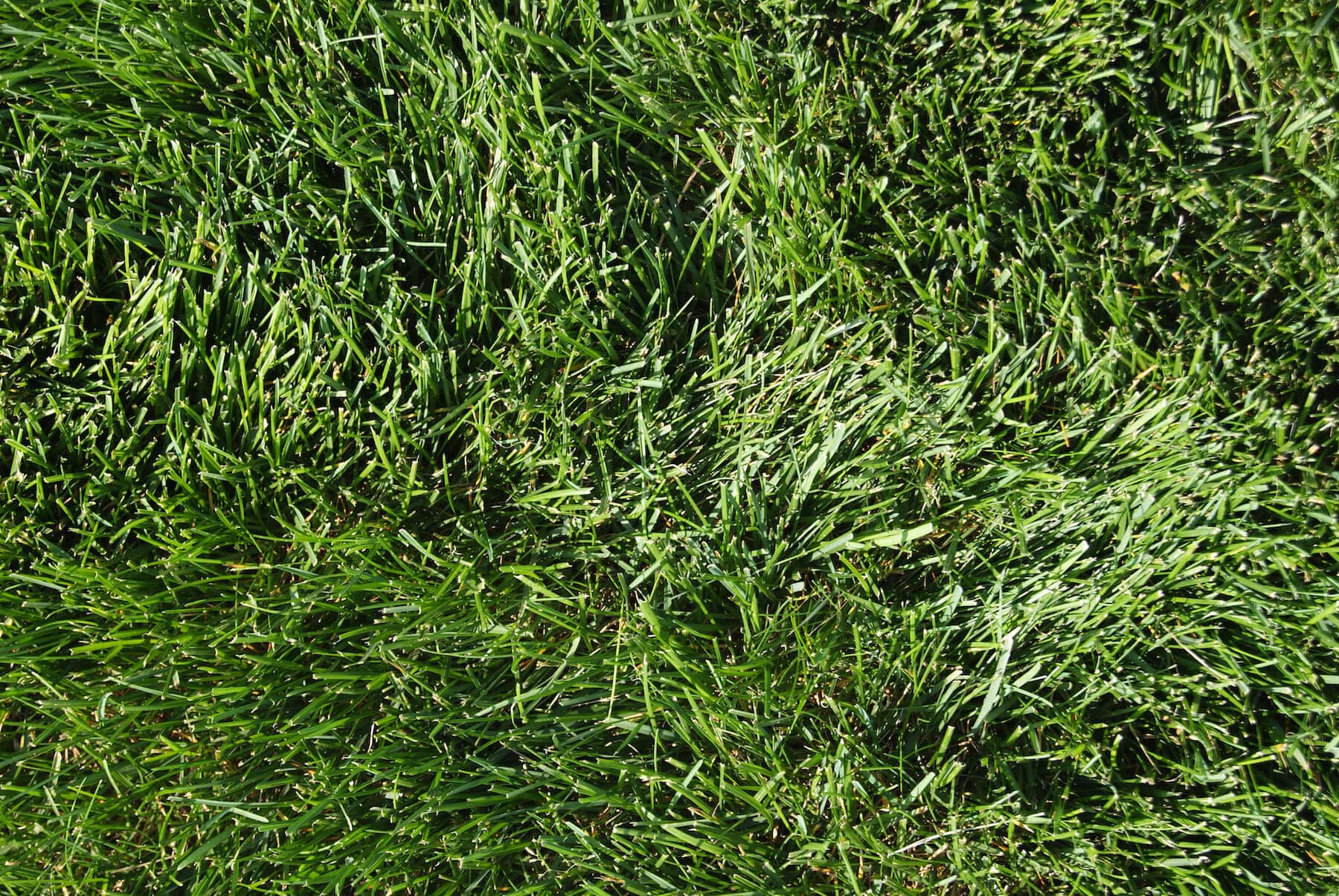Kentucky Bluegrass
We’ve got the answers to your questions about Kentucky Bluegrass.
Read on to learn if it’s a good fit for your specific lawn purposes.

Some Facts About Kentucky Bluegrass
Although a very popular grass in the United States, it is surprisingly not native to the U.S. Kentucky Bluegrass is native to these places:
- Morocco
- Northern Asia
- Mountains of Algeria
- Europe
In the U.S. it can now be found most commonly in these states:
- Northern Arkansas
- Texas
- North Carolina
- Tennessee
- Oklahoma
- Kentucky
- Some Western States
One unique thing about Kentucky Bluegrass is its ability to be drought tolerant. With only a little water, the crowns in your yard could actually survive drought conditions for several months. Then once rainfall or irrigation returns, your lawn will come back. However, in general, it still requires more watering than most other types of warm season grasses.
Characteristics & Traits
This type of grass can grow up to 18–24 inches tall. It is the boat-shaped leaf tip that makes it so easy to identify. The technique by which this grass spreads is tillers and rhizomes. Kentucky Bluegrass forms dense sod.
It is in the spring and late summer that new shoots develop. However, in the late spring and into summer, the shoots of this grass grow erect. During early spring or in the fall, the shoots are decumbent. Although many people think this is in response to temperature changes, it is actually related to the length of the day. In fact, the length of the day even affects the number of shoots that Kentucky Bluegrass develops, with more shoots during short days.
In the transition zone, the appearance of new leaves happens year round; in colder climates, there are few new leaves during winter months. In the spring, the length of time between new leaves is just 10 days, and it slows to 22 days during the summer and autumn.
Yet in the late summer to fall, they are much shorter.
During growing season, the leaf blades usually hold their green color for up to 10 –12 days. Leaf blade lengths also change based on the season.
During late spring and summer, the leaf blades are about three to four inches long. Leaf blades undergoing seasonal changes are common with warm season grass choices.
Where Did It Come From & What Are The Varieties?
Reports indicate that Kentucky Bluegrass was brought over to the United States by early colonists. The seed was actually part of a mixture of other seeds.
Today it can still be found in places like Europe and Asia, as well as in some U.S. states.
The varieties are fairly numerous, with over 100 being developed in just the past 25 years. Among all of these varieties, there are differences in some of their traits and tolerances.
For example, some of the varieties that tolerate shorter mows include:
- Touchdown
- Adelphi
- Ram I
Some of the Kentucky Bluegrass varieties that tolerate shade better are:
- Glade
- Nugget
- Bristol
Others that are known for handling the Southern climate better would be:
- Vantage
- Baron
- Midnight
However, when planning for growth in the transition zone, it is ideal to have a blend of three different varieties. This will help optimize your chances for success. This can also help protect it from certain diseases. Using a blend means not all the varieties involved will be susceptible to the same things, which can better protect your lawn.
Advantages & Disadvantages
Here are some quick advantages and disadvantages to reflect on when considering Kentucky Bluegrass:
Advantages
- It can be planted any time of year, although it does best when planted in either the spring or fall.
- Although this type of grass needs regular watering, it can survive drought periods with a small amount of watering.
Disadvantages
- It has higher watering requirements than most of the warm season grasses.
- This is a bigger disadvantage if growing Kentucky Bluegrass in the Western part of the United States, because watering requirements are even higher than normal.
Establishment & Maintenance
Kentucky Bluegrass is most commonly established from seed. If this is the route you are taking, you will need two to three pounds of seed per 1,000 square feet.
With less seeding, it will take longer for cover to grow and develop. If you are using less seed, then drilling is the only way to get better coverage.
Although this type of grass can be planted any time of year, it does best when planted in spring or fall. The watering requirements during establishment can be a bit tedious. You need to water lightly two to three times each day during the initial two weeks. However, once the seedlings begin to emerge, you can reduce the number of times you water.
Kentucky Bluegrass also requires higher nitrogen levels during the year of establishment than later. What exactly does this mean? In its first year, your yard could require as much as five to six pounds of nitrogen. However, you should only need two to three pounds per year during the following years.
Watering, Mowing & Pest Management
Once your Kentucky Bluegrass grows above two inches, it is time to cut it. Rotary or reel can be used, but be sure the blades are sharpened and the reels properly adjusted. Otherwise you run the risk of ripping out the newly established seedlings.
At a two-inch mowing height, you can usually plan on cutting your yard once a week. This is typically less frequent during cooler months with shorter days. There are certain varieties that tolerate shorter mowing, as mentioned above, but this can still compromise the overall strength of your lawn.
Not to mention the shorter mowing heights can lead to problems with crabgrass. Cutting above one inch reduces the risk of weed development.
Take note that compared to other warm season grass choices, this one requires more watering. In fact, in the transition zone, your lawn can require as much as two inches of water per week.
Without this during the warm summer months, your lawn can lose its green color or growth can be stunted.
Since the root zone for this type of grass is usually too shallow to hold a great deal of water, the watering needs to be spaced out and not all at once to avoid drowning out or washing out roots.
Even though Kentucky Bluegrass demands a great deal of watering, it can still survive a drought. By providing a little water even every two to three weeks, the crowns of grass will remain alive.
Once there is a significant rainfall or proper irrigation resumes, your lawn will have a speedy recovery. So while you want a lush green lawn, keep in mind this type of grass can survive when necessary on very little water for several months.
Alkaline soils may create the need for more care. With this type of soil issue, Kentucky Bluegrass is more likely to develop iron chlorosis. This is a condition in which yellowing occurs between the veins of younger and newly developing leaves. This condition is only heightened when there are elevated levels of phosphorous in the soil. A foliar application can help and keep phosphorous fertilizer to a minimum.
The most common problems with Kentucky Bluegrass are:
- crabgrass
- clovers
- dandelions
Herbicides can help with weed control in these cases. Some of the insects that can affect Kentucky Bluegrass are:
- Sod webworms
- Grubs
- Billbugs
Keep an eye out for signs of these pests and act quickly. Insecticide treatment can be easier and more cost effective when caught early. Also be aware of the possible diseases that can develop in this type of grass:
- Rust
- Fusarium
- Powdery Mildew
- Helminthosporium
- Leaf Spot Diseases
Choosing blended seeds can help with tolerance to some or all of these. You should avoid mixtures with Ryegrass, because this can cause additional problems.
Overall, Kentucky Bluegrass is not a high maintenance grass except for its irrigation needs to keep it looking nice.







